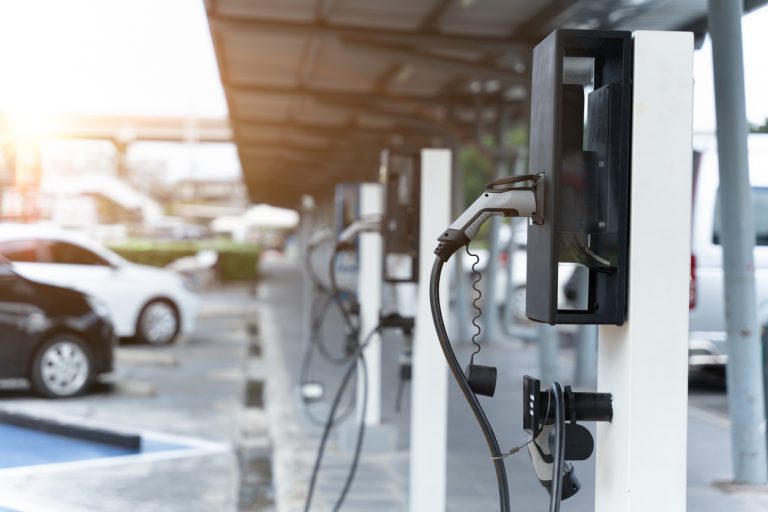Blog Post
From Challenges to Success in Fleet Electrification: Tips on EV Transition
By John Ciarlone
August 28, 2024

In the fast-evolving world of fleet management, few topics are as pivotal as the shift to electric vehicles (EVs). This journey towards fleet electrification presents both challenges and opportunities, and navigating it successfully requires careful planning and strategic execution. The growing demand for EVs and the increasing vehicle sales in this sector indicate a clear trend towards a future filled by electric cars powered by electric motors, leaving behind the era of emissions vehicles.
Recently, I had the opportunity to discuss this very subject with Carlos Oropeza, a member of the marketing team here at Wheels, on a video podcast. Our conversation uncovered valuable insights that can guide fleets considering a transition to electric vehicles, and I’d like to share some of the key takeaways with you to help navigate this important transition.
The Importance of a Well-Planned Charging Strategy
One of the first and most critical considerations for any fleet manager looking to transition to EVs is the charging strategy. This should be a top priority, as it directly impacts the success of your fleet electrification efforts. The availability and accessibility of charging stations play a crucial role in ensuring seamless operations for your electric fleet.
Primary and Secondary Strategies
Every fleet will have a Primary and Secondary charging strategy. The Primary strategy will be where most of a given vehicle’s charging takes place, which is dictated by where the vehicle is parked for a significant amount of time. The Secondary strategy should be the “backup”, and will generally be public charging. No fleet should be utilizing public charging as a Primary charging strategy. Public charging is expensive, and overuse of DC Fast chargers can be detrimental to battery health.
- Primary Charging Strategy: This is where most of the charging activities will take place; this could be at a corporate office, vehicle depot, or at drivers’ homes in the case of take-home vehicles.
- Secondary Charging Strategy: Almost every fleet will need a “backup” strategy for public charging. This allows the drivers to charge when they stray out of range from the main operating base. For your drivers, it will also alleviate any anxiety over “range”.
Selecting the Right Vehicles
Another important consideration is if the currently available models of electric vehicles in the market will meet the replacement requirements of your internal combustion engine (ICE) vehicles. This will largely depend on the type of operations of your fleet, so you should consider:
- Vehicle Capabilities: Ensure that the EVs available today are sufficient for the demands of your fleet, especially in range and load capacity.
- Driver Needs: Consider the driving habits of your employees. For example, if a driver does primarily long-distance travel, then an electric vehicle might not be suitable until the public charging infrastructure has matured.
Leveraging Telematics for Optimal EV Management
Telematics data plays an important role in managing electric vehicles effectively. Unlike traditional vehicles, EVs function more like networked devices, similar to smartphones, constantly transmitting invaluable data for fleet management:
- Real-Time Data: EVs come with telematics that can deliver accurate real-time data about the power usage, state of charge, and range. This information is valuable for monitoring and optimizing fleet performance.
- Sustainability Tracking: Telematics also makes it possible to track the quantity of greenhouse gas emissions and the CO2 output, which is important in ensuring that a company meets its sustainability goal.
Overcoming Challenges in the EV Transition
Transitioning to EVs is not without its challenges. One of the biggest is the recharging infrastructure investment, especially when putting up charger installations at business locations, or even home installations for that matter, in large numbers. The primary concerns will be:
- Gaining Senior Management Buy-In: It’s critical to secure support from senior leadership early in the process. Their support will be crucial in breaking barriers and making the EV transition smoother. Highlight the long-term benefits of fleet electrification, such as reduced total cost of ownership, lower maintenance costs, and improved sustainability metrics.
- Navigating Departmental Pushback: Whenever there is a big change, some departments will resist it. Having gained senior leadership support can help in your change management journey. Address concerns proactively, provide adequate training and support, and emphasize the positive impact of the transition on the company’s bottom line and environmental footprint.
Final Thoughts
Transitioning your fleet to electric vehicles is a complex but rewarding process. It’s an essential step in the journey of fleet electrification. By carefully planning your charging strategy, selecting the right vehicles, utilizing telematics, and securing management buy-in, you can navigate the transition more smoothly. Remember, as we move forward in this evolving landscape, thoughtful planning and strategic implementation are key.
Together, let’s go far!
